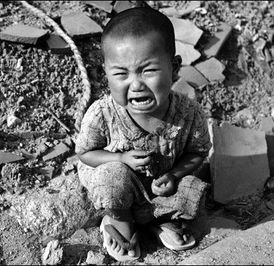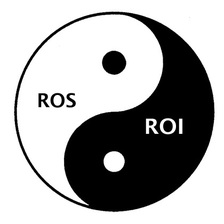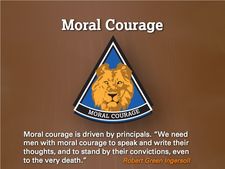Considering a Move to Management:
0 Comments
 “Without imperfection, neither you nor I would exist.” ~ Stephen Hawking The politicians, pundits and journalists who are against the Iran Nuclear Agreement focus on one point: it’s not perfect and could be better. Most of us know from experience that humans are not perfect. Isn’t it unrealistic to expect that any agreement created by imperfect beings be perfect? We are not in a position to force capitulation. Negotiation is a process that creates a path forward in which each party retains its dignity, propelled by the desire to give up something of personal value in order to gain something of greater value for everyone. Agreements are never perfect. If Congress thwarts this agreement, what are the alternatives? We could continue and even increase sanctions, but our allies will not stand by our side, and if we are the only country applying sanctions the effects will be minimal—not a perfect alternative. Fifty years of embargoing and sanctioning Cuba has shown us that these alternatives can and will cause increased defiance. We imposed strict sanctions on Russia, yet Putin doesn’t seem a bit inclined to return Crimea. We could also go to war, but we all know how imperfect war is. We only have to look at recent history to remember that in modern war there is seldom a clear winner and the costs are staggering and tragic. Consider: Korean War: No winner emerged. Instead, Korea remains divided and the North retains the capability of making a nuclear bomb(s). The war was waged at a great cost in terms of money and lives. Vietnam War: Objectively, North Vietnam, the communists, achieved their goals of reuniting and gaining independence for the whole of Vietnam, and it remains under communist rule today. The U.S. dropped more than 7 million tons of bombs—more than twice the amount that was dropped on Europe and Asia in World War II—and we lost more than 58,000 young lives. Not a perfect solution or result. Gulf War: The aftermath of the Persian Gulf War appeared to be a victory, but what we learned is that the victory was hollow. Saddam Hussein was not forced from power and the region became less stable. Many believe that this war helped to make Al Qaeda a force that would later strike our homeland. Iraq War: The initial stage of the war was a raging success—the banner proclaimed “Mission Accomplished.” Yet, the war created eight years of sectarian violence, 4,900 American lives lost and many more severely injured, and it amounted to a trillion dollar debt from which we still haven’t recovered. Iraq is still incapable of defending itself, and it gave rise to ISIS. We need to ask ourselves if an imperfect agreement that may produce peace and diminish the potential of a nuclear Middle East is a better risk than the alternatives. Or are we willing to put our country and the world at risk by pursuing alternatives that have a dismal and tragic record. Can we afford to risk isolating ourselves from our allies, countries critical to solving the world’s most urgent problems? Are we willing to once again shed the blood of our youth by waging war? Writer Archibald McLeish said, “There is only one thing more painful than learning from experience and that is not learning from experience.” We have a clear choice. The Iran Nuclear Agreement has risks, but experience has shown that the alternatives are much more costly in terms of world standing, capital and human lives. All our options are imperfect and risky, but the greater risk here is repeating the past when we have a chance to take a risk for peace instead.  Have you been in a near-miss human collision recently? This seems to be happening to me more frequently these days. When it happens, I’m typically in an airport, at a mall, or on a sidewalk, and notice I’m on a collision course with another person absorbed in their smart phone. Not wanting to create a scene or cause harm to myself or the other person, I change course. As I do, the other person notices my movement and momentarily looks away from their phone, only to reengage, heading toward the next collision. These incidents got me thinking about our extraordinary capacity to notice. We humans have been blessed with five senses: sight, hearing, touch, smell, and taste, which help us to fully experience and understand our presence in and connection to the space we occupy. History, anthropology, and other sciences validate that human survival was based to great extent on our ability to notice when we were in danger and when we were safe. Noticing and then avoiding danger allowed us to flourish. Noticing is still a significant factor in our safety, engagement with work and life, and survival. It matters if you notice that you are about to collide with a fellow citizen as you’re walking. It matters if you notice that your child is sad. It matters if you notice a bicyclist is sharing your road. It matters if you notice a co-worker is using a ladder that is not tied off or has not locked out an energy source before working to fix the problem. And it matters, as a leader, if your employees are happy and engaged or frustrated and on autopilot. There is no doubt in my mind that using our senses to notice creates advantages, improves our safety and engagement, and generates a fuller understanding of our world. This exceptional capacity that can provide so many benefits, however, is being threatened by our technology, self-absorption, and isolation from the experiences of those around us. Each time we turn off our capacity to notice, we become vulnerable. When we become so self-absorbed we don’t notice the homeless person in the shadows, or isolate and embed ourselves so deeply in our homogenous groups we don’t notice social injustice and inequality, we become vulnerable. We are vulnerable because we’ve loss the opportunity to connect and understand. Our five senses are pathways into our hearts and minds, where our shared human experiences are stored. If we miss the opportunity to notice, we miss the opportunity to understand, connect, and make a difference in the lives of others and ourselves. To be and feel noticed meets a deep human need. Have you ever longed to be noticed by someone, maybe a teacher, a coach, a parent, or a boss? When that moment of being noticed happens, you are infused with good feelings. If you feel unnoticed, unpleasant feelings and actions arise. Children misbehave when they go unnoticed, and workers languish and under-perform. Recently, our country has experienced riots and demonstrations by people struggling to have their plight noticed. Noticing is a powerful capacity we all possess, and it offers wonderful things. It can change a friendship or a working relationship—it can change the world. It is a gift to notice someone, and especially to oneself, because you are now more present and in tune with your world. What we notice and don’t notice defines who we are in that moment as well as provides us the opportunity for change. Noticing can be uncomfortable and exhilarating. The act of noticing will open you up to your sixth sense (s) - your emotions. You may notice that you are feeling sadness or anger or joy and awe depending on what you are experiencing. Emotions increase the power of noticing by adding clarity and texture. Martin Luther King said, “Our lives begin to end the day we become silent about things that matter.” I like to paraphrase his quote to say that our lives begin to end when we lose our ability to notice the things that matter.  A familiar and popular business performance metric is ROI—Return on Investment. For many, this is the keystone of workplace culture, driving business strategy and decisions as well as the behavior of managers and employees. Most businesses won’t invest capital or other resources unless there is a direct positive financial gain from the investment. It’s a no brainer—if a business wants to be successful and remain viable, it must generate a return. But is there a dark side to ROI? Balancing ROI and ROS There is a performance metric that is as critical to organizational success as ROI: ROS—Return on Safety. Providing a healthy balance to ROI, ROS (#returnonsafety) is a metric that applies to every business, though it carries particular significance in manufacturing and production industries such as oil and gas, transportation, chemical, farming, and recycling. In these workplaces, humans interact closely with heavy machinery and hazardous substances, and it is not an unproven theory that focusing too intently on ROI can affect employee safety and decisions as well as organizational success. In the last five years we’ve witnessed tragedies that serve as prime examples of what happens when organizations’ focus on ROI is dominant: Upper Big Branch Mine (29 miners killed): A final report on the West Virginia tragedy indicated that Massey Energy had a culture of willful disregard for safety in favor of optimized profit and production. Deepwater Horizon drilling platform explosion (11 workers killed): A statement from the final report noted that “the culture of safety is less strong than the imperative to meet deadlines, what has been referred to in the Deepwater Report by the Center for Catastrophic Risk Management as an ‘imbalance between production and protection’” (Forbes.com, 11/28/2012). General Motors’ faulty ignition switch (31 deaths): Began with an ignition switch that was found to be defective in 2001. GM’s CEO, Mary Barra, stated to a congressional committee investigating the failure, "The customer and their safety are at the center of everything we do." Yet, GM’s own internal investigation, The Volukas Report, noted that there were conflicting messages regarding ROI and safety: “Two clear messages were consistently emphasized from the top: 1) ‘When safety is at issue, cost is irrelevant’ and 2) ‘Cost is everything.’” One engineer said that the emphasis on cost control at GM “permeates the fabric of the whole culture.” The Price of Imbalance The cost of these disasters combined is estimated to top 50 billion dollars. But the real tragedy is that as many as 71 people lost their lives because employee safety became an afterthought, or was never a priority to begin with. This is the dark side of ROI. Could a culture that focuses on ROS, instead, have prevented these disasters? Most experts and authorities say yes. Peter Kelly-Detwiler’s 2012 Forbes article, “BP Deepwater Horizon Arraignment: A Culture That ‘Forgot to be Afraid,’” addresses not just the Deepwater Horizon disaster but others as well: “The gist of all of these inquiries and reports is pretty much the same: repetition, complacency, complicated technology, and a poor culture of safety combined with the production/protection imbalance is a recipe for failure. This can generally be remedied by the appropriate focus on best available safety practices and technology.” Calculating the Worth of ROS ROS as a metric is not as easy to calculate as ROI. It doesn’t show up in quarterly profit and loss statements and if it does its typically as an expense, therefore organizations have difficulty assessing its value to the bottom line—something many CEOs, under pressure from shareholders and the financial markets, can’t see beyond. Instead, ROS requires leaders to have a vision that extends beyond quarterly reports. These men and women must have a steadfast commitment to safety, the courage to confront the short-term thinking of Wall Street, and a willingness to reject the idea that production and profit achieved at the expense of employee safety is a sustainable business strategy. Leaders who respect the value proposition of ROS understand how intimately safety is related to quality, reputation, efficiency, innovation, and worker engagement and loyalty. How One Company Benefitted Paul O’Neill, CEO of Alcoa from 1987-2000, was a leader who understood ROS and had the foresight to make it his keystone business philosophy and strategy. In “How Changing One Habit Helped Quintuple Alcoa’s Income,” Drake Baer writes: “The emphasis on safety made an impact. Over O'Neill's tenure, Alcoa dropped from 1.86 lost work days to injury per 100 workers to 0.2. By 2012, the rate had fallen to 0.125. “Surprisingly, that impact extended beyond worker health. One year after O'Neill's speech, the company's profits hit a record high. “Focusing on that one critical metric, or what (writer Charles) Duhigg refers to as a ‘keystone habit,’ created a change that rippled through the whole culture. Duhigg says the focus on worker safety led to an examination of an inefficient manufacturing process—one that made for suboptimal aluminum and danger for workers. “By changing the safety habits, O'Neill improved several processes in the organization. When he retired, 13 years later, Alcoa's annual net income was five times higher than when he started.” An ROS mindset instills organizational leaders with the compassion, courage, and values of a Paul O’Neill. To assess the balance and tension between ROI and ROS in your business, review the following list. 10 warning signs your culture is ROI-influenced: 1) The person who is responsible for safety does not report directly to the CEO 2) The CEO and managers rarely discuss safety at strategy, HR, production, quality, and sales and marketing meetings. 3) The company’s safety vision is not linked to the business strategy or worst it is non-existent. 4) Managers throughout the organization fail to consistently emphasize safety or are resistant to safety initiatives. 5) The organization has few if any feedback loops for continuous safety improvement. 6) Metrics used to evaluate individual and team performance have minimal to no weight placed on safety. 7) Employees are not familiar or are skeptical of the sincerity regarding the company’s safety vision and values. 8) Training and development do not emphasize safety. 9) New employees and contractors are not first and formally introduced and oriented to the organizations safety vision and values. 10) Employees are fearful of negative repercussions for reporting safety incidents, risks, and hazards. This is just the beginning though. Truly understanding what drives your business requires a more nuanced and careful approach than checking some boxes. I’ve seen many situations in which the person responsible for EHS reported directly to the CEO yet felt disrespected and undervalued, and vice versa. Assessing the motives of any organization requires a hard look at these relationships. Ultimately, an organization that creates a culture more heavily influenced by ROI than safety cannot ensure success for its shareholders or stakeholders. Choosing to gamble the health and wellbeing of employees for production and profit, these businesses will always be a risky—not reputable or ethical—investment. ROS-Return on Safety C The Renewal Group 2015 References and Acknowledgements: Volukas Report: http://www.autonews.com/article/20140605/OEM11/140609893/read-gms-internal-report-from-investigator-anton-valukas-here I want to acknowledge Hugo Moreno’s article, “10 Warning Signs of a Weak Culture of Quality” (Forbes Insight), which provided the basis for the checklist used in this article  The Boston Marathon bombings are still running through my head and heart. I know why my heart can’t seem to let go—it’s because of the many connections I have to the race and the area. I grew up in New England and once again live 52 miles from the Prudential Center where the race ends. I used to be baffled and amazed by the marathoners when I was younger and couldn’t understand why anyone would want to put his or her body through the agony of running 26.2 miles. As a teenager, I would throw up after running the fitness mile during the first week of football practice, only later to be amazed that I could run 26.2 miles myself and enjoy it. Running became my avocation that led to my qualifying and completing the Boston Marathon in 1982. Today, each of the stories of the victims inspires and disturbs me, especially disturbing is that of eight-year-old Martin Richard who was waiting with his family to see his dad finish. It awakened memories of my daughters waiting to catch a glimpse of me crossing the finish line and to share in my relief and excitement. Even today weeks after the bombing there continues to be an outpouring of support, compassion, and empathy from everyone across the country, which has been a healing balm for the psychic trauma for all those affected. This coming together has helped families and friends to regain balance, hope, and faith in the reality that the human spirit is truly meant for good and not evil. I know it is also during these times when we individually and collectively call upon our resiliency to help us move beyond and transform our pain into a deeper commitment to live every moment with purpose. We know the standard phases: Life is short. Time is the least we have of. Don’t put off ‘til tomorrow what you can do today, because tomorrow may never come. And we would all be better served if we held these words not just as clichés, but also as the wisdom of being alive and living in a world where there are no guarantees. In the midst of the chaos, immediately after the bombs exploded people, ordinary heroes responded. People there to celebrate life instantly began doing whatever they could to comfort and care for the victims. This passion to help continued throughout the day and into the week. Police and FBI put out requests for pictures, videos, and any bits of information that might be a piece to solving and preventing more chaos and tragedy. Phone lines and websites were flooded with residents sending pictures and videos and calling in information. While there were many factors that led to the death and capture of the brothers who committed this horrendous crime, it could not have ended so quickly without a community’s commitment to be part of the solution – to not accept that evil is stronger than good. There are many lessons and insights that I continue to digest and try to make meaning of stemming from this event. The most important is, what will I do to not let the one life I have to escape without fully celebrating how scared it is? I also think about our spirit of community—the compassion that people have when they allow their human nature to flow through their hearts and into their hands to hold those in need close. When there is a clear need or purpose and we see a way to contribute, we just act; we give whatever we can and we feel good about giving. I wonder why leaders and organizations don’t believe in the goodness of the human spirit - the desire that lives in our hearts to be part of the solution not the problem. Why do we manage by establishing rules to prevent a few from doing ill, all the while killing the spirit of the many more who want to be part of something and to contribute to the benefit of all? Why do leaders believe they are the ones ordained to solve organizational problems? Why do they often divide us by placing blame on one group or the other? The criminals who committed this terrible act were caught because of the thousands of onlookers who provided pieces to the puzzle. So can the folks on the shop floor. They know what’s wrong—you just have to invite them and ask, “What can we do to solve this problem?” I recently had a conversation with a leader who experienced a crisis at his organization and was surprised at how everyone pitched in to do whatever it took to prevent the crisis from occurring. I asked, “Do you think there is any learning from this situation that could be applied to other issues you are challenged with?” “It’s the difference between war and peace,” he told me. “The two situations are completely different.” How many more bombings and crises do we have to go through before we trust that ordinary people—everyday workers—want to be part of the solution, not the problem? The answer is simple: if we articulate a why everyone can share in and invite their participation, we can solve many of the issues challenging our organizations, communities, and even our planet. Had the Boston Police Department said, “Stay out of our way! Let us professionals take care of the problem,” more chaos might have transpired and we still might be looking for the criminals. But instead they asked every single person in the city for help. Let’s not let ego and fear kill the human spirit. If Boston can do it, surely we can too.   I’m sure you’re aware of what a credit rating is—also referred to as a score. It’s the number that gets assigned to you by institutions that collect data about your money handling behavior. And that number can be the deciding factor in many life decisions, such as purchasing a car or a home, and in some cases even getting hired. Unfortunately, many people go about life not knowing their credit score until the moment they’ve made a big decision—only to shockingly find out their credit rating is not high enough to get approved for what they want. Does this sound familiar? It’s never a pleasant experience to be told you are not credit worthy. Once the shock, disappointment and maybe anger subsides, you might start racking your brain trying to figure out what the heck is in that report thwarting you from getting what you want. Trying to find the answer can be just as unpleasant as receiving the rejection. Before long, it begins to sink in that information about how you live your life is constantly being monitored and evaluated by unknown people in unknown organizations in the most dispassionate way. Even more disturbing is that you may find out that the information is inaccurate. It can make you feel helpless and powerless. In some aspects, your credit rating is similar to your credibility rating. But in other respects, your credibility rating is far more important because it impacts the most valuable asset you have—TRUST. Everything in life revolves around this powerful emotion. It can disrupt global financial systems and ruin a valued relationship. And once it’s lost, the ability to recover and regain one’s credibility is less than assured. Forget about buying it back—even if your credit rating is excellent, trust is never for sale. Yet everyday we take risks with our credibility rating by not paying attention to our words and deeds. Just like the credit rating agencies, every day people observe and experience what we do and how we do it and make decisions based on how well our words and actions are aligned with the values we espouse as well as a set of commonly held values: respect, compassion, honesty, responsibility, and fairness. These moments of credibility are not stored in a dispassionate computer in some unknown location—they are stored in the hearts and minds of the people we interact with and have relationships with. They become our relationship capital. Eventually, these credibility data points accumulate to the extent that our credibility will be damaged or lost, or if we’re lucky, honored with a seal of trustworthiness. Life is difficult enough without having to live without credibility. Imagine going through an entire day knowing everyone you encounter questions or is suspicious of your motives, your sincerity, your honesty, and your fairness. No matter what position(s) or title(s) you hold in life—father, mother, supervisor, leader, or teacher—your credibility rating is paramount. Without relationship capital and without trust, you cannot influence, you cannot lead, and your most important wants and desires are at risk of being unfulfilled. Don’t wait to find out your rating. Start today by asking, “Am I walking my talk? What I say and do—are these things in alignment with my stated values? Do they portray a sense of respect, caring, honesty, and fairness?” Connect with people you know and trust and ask for their honest assessment. Asking for feedback is a courageous activity. Once your strength and confidence grows, extend your feedback process and circle with colleagues and employees. Whatever feedback you get about your credibility rating is a gift. Because now you know your “score”—and you won’t be shocked and rejected later when it matters most. I have a theory about values, leadership, and workforce engagement that is related to a study I read on brain imagining and sacred values. The study, titled, “The Price of Your Soul: Neural evidence for the non-utilitarian representation of sacred values,” was conducted by Gregory Burns, PhD, Director of the Center for Neuropolicy at Emory University. Through the study Burns found that “sacred values prompt greater activation of an area of the brain associated with rules-based, right-or-wrong thought processes as opposed to the regions linked to processing of costs-versus-benefits."
The study gave participants an option to disavow any of their personal value statements for money. Disavowing a statement meant they could receive as much as $100 by simply agreeing to sign a document stating the opposite of what they said they believed. The disavowing was interpreted as the value statement not being sacred to the person. Statements that the participants refused to disavow were classified as being personally sacred. Brain imaging indicated that scared and non-sacred values activated different areas of the brain. The scared values activated areas associated with right and wrong and the non-sacred values activated areas related to pleasure and rewards. In addition, the researchers found that the amygdala region became activated when a person’s sacred values were challenged. The amygdala is the part of the brain that controls our “911” stress alert reactions of fight, flee or freeze when it perceives a threat to our well-being. It is also associated with our emotions, particularly emotions connected to perceived negative experiences, which over time creates a filing cabinet of negative memories. In our modern world people usually don’t react physically by fighting or fleeing, they react emotionally. We fight by arguing or being stubborn; we flee by disengagingmentally and emotionally, which lessens commitment; and we freeze by shutting down our creativity. It is emotional reactions like these with which a leader must contend. Therefore, developing one’s emotional intelligence is critical to effectively counter and minimize these stress responses. Organizations would be wise to establish emotional intelligence as a leadership prerequisite if they want to reap the benefit from higher levels of workforce engagement I believe that workforce engagement issues are a result of leaders and organizations not operating from a foundation of sacred values. The Institute for Global Ethics did exhaustive surveying and research in an attempt to identify what core moral and ethical values were held in highest regard by people and communities throughout the world. No matter where they went, they found the same answers: honesty, responsibility, respect, fairness, and compassion. In essence, these are core sacred values. Applying the brain imaging research from the sacred values study, it would seem that if any of these five core values were in essence disavowed by anyone – in this instance, a leader – it would activate the “right and wrong” areas in the brains of his or her employees and at the same time activate their amygdale, putting each into either a fight, freeze or flee state of reaction. The result could be a strong feeling on part of an employee to not trust this person and to feel that they have been “wronged,” both of which will negatively impact engagement, commitment, performance, and most importantly, trust. Values authenticity is the core issue. Leaders and organizations who – within their heart, head, and gut – are not authentically aligned and committed to these core sacred values will never be able to fully capture the hearts and minds of their workforce nor their stakeholders. The Gallup Organization, which has made a science of employee engagement, reported that in the third quarter of 2011, “Seventy-one percent of American workers are ‘not engaged’ or ‘actively disengaged’ in their work, meaning they are emotionally disconnected from their workplaces and are less likely to be productive.” This means that 71% of the country’s workforce is emotionally reacting by fighting, fleeing or freezing.Why? Because they believe that their sacred values are absent or being disavowed. A leader cannot drive workforce engagement if he or she does not authentically hold these five core values as sacred. When I’ve had the opportunity to talk, or should I say listen, to employees, these five values are at the core of their concerns and issues, and are the crux of their disengagement:
These same sacred values are at the heart of the issues that are polarizing and creating conflict in this country and around the world and thwarting people from finding solutions to their most pressing problems:
Leaders from all sectors of our society must develop a deeper understanding and sensitivity of how these core sacred values dynamically hold relationships, teams, organizations, and countries together, all be it sometimes in a chaotic way. When organizational and political leaders focus on and subscribe to the perspective of cost versus benefit, there undoubtedly will be tension and that tension will give rise to conflict and disengagement. In his book Moral Courage, Rushworth Kidder states, “Successful organizations must require moral courage in their leaders and then work assiduously that it is rarely needed.” I agree, but more importantly leaders must take on the hard work – the work of authentically committing to these sacred core values and then modeling moral courage when they are challenged. To create a highly engaged workforce leaders and organizations would be better served to first look in-ward and to evaluate the depth of their commitment to these core sacred values. Authenticity and Moral Courage are two of the Seven Hallmarks of Relationship–Centered Leadership. If you have an interest in building workforce engagement and becoming a high-performing leader, we invite you to explore the Relationship–Centered Leadership program. For more information on this program download a description from the Free Downloads tab |
Follow us
|



 RSS Feed
RSS Feed
